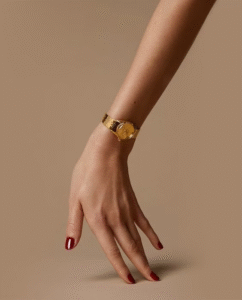Brand names have always been key to making a splash and grabbing attention, but in the e-commerce universe, they’ve leveled up. With social media buzzing with fresh brands showcasing trendy names, flashy logos, and catchy taglines, standing out has never been more crucial.
Think of a trademark as your brand’s signature. It’s anything that sets your products or services apart, like a unique phrase, a killer logo, or a distinctive color. Trademarks are the rockstars of intellectual property, essential for making your brand unforgettable and unique.
But have you ever wondered about registering your name as a brand name?
On a planet with more than 8 billion people, you could be sharing your name with more than hundreds of other people at the same time. So how can you then register your name as a brand and still make sure that you maintain the authenticity, uniqueness, and differentiation that you would normally expect from a brand name?
In this article, we’ll dive into how to keep your personal brand name unique and authentic by exploring how it’s done in three major hotspots: Japan, India, and the USA. Let’s break it down country by country and see what’s what!
Trademark Laws in Japan: Challenges and Case Studies

In Japan, trademarks are registered under the Trademark Act, governed by the Japan Patent Office (JPO). This registration process accommodates trademarks, including words, logos, colors, sounds, positions, and marks.
However, Japanese law imposes certain prohibitions concerning the registration of personal names of persons as trademarks. Article 4(1)(viii) prohibits the registration of a personal name or pen name to protect an individual’s rights which state as:-
However, a peculiar exception makes it possible to register personal names as trademarks provided that the applicant for the same, obtains “written consent” from all the persons having the same name to ensure the criteria of uniqueness of name and remove the possibility of confusion with existing trademarks.
For greater clarity, let’s review some significant decisions by the Intellectual Property High Court (IPHC) in Japan since 2019 concerning the registration of personal names as trademarks:
1. Ken Kikuchi Case (2019): In 2019, the IPHC upheld a decision by the Japan Patent Office (JPO) regarding a trademark application filed by jewelry designer Ken Kikuchi [IPHC, No. 2019 (Gyo-ke) 10037]. The application sought to register the name “KEN KIKUCHI,” which included the personal name of another individual. The court ruled that “KEN KIKUCHI” could be interpreted as a personal name (“KIKUCHI” as the surname and “KEN” as the given name) and did not demonstrate sufficient uniqueness. The court also stated that prior registration of the name did not guarantee uniqueness or influence the decision. Consequently, the name was not granted the status of a trademark.

2. Takahiro Miyashita Case (2020): In 2020, the IPHC dismissed an appeal by Kabushiki Kaisha Soloist, owned by renowned fashion designer Takahiro Miyashita. Miyashita sought to register “TAKAHIROMIYASHITA The Soloist” as a trademark [IPHC, No. 2020 (Gyo-ke) 10006]. The court interpreted Article 4(1)(viii) of the Trademark Act in conjunction with the Trademark Examination Manual (TEM) and found that “TAKAHIROMIYASHITA” could be recognized as a personal name. The court emphasized that the protection of personal rights and the promotion of development required the exclusion of names shared by other individuals who had not consented. Therefore, Miyashita’s reputation did not affect the outcome, and the trademark was not approved.
3. Matsumotokiyoshi Holdings Co., Ltd. Case (2021): In August 2021, the IPHC reversed a decision by the JPO regarding an application by Matsumotokiyoshi Holdings Co., Ltd. for the trademark “MATSUMOTOKIYOSHI” for a soundtrack [IPHC, No. 2020 (Gyo-ke) 10006.]. The court determined that”MATSUMOTOKIYOSHI” referred to a well-known drugstore chain rather than a personal name. The name’s use in TV commercials was already established as associated with the drugstore chain, not as an individual’s name. The court concluded that the trademark did not violate Article 4(1)(viii) of the Trademark Act, as it did not involve “another person’s name,” and thus, was approved.
In summary, the initial cases involving Ken Kikuchi and Takahiro Miyashita were denied trademark registration under Article 4(1)(viii) of the Japanese Trademark Act due to the inclusion of personal names. Conversely, the trademark application by Matsumotokiyoshi Holdings was granted because the name was recognized as a commercial identifier rather than a personal name, highlighting the nuanced approach to determining trademark eligibility under Japanese law.
Registering a Personal Name as a Trademark in India
With its rich heritage and diverse culture, India has a long tradition of using family surnames or personal names to create a strong identity. Big wigs like Tata, Mahindra, Adani, Birla, and Bajaj show how this practice helps in building iconic brands.
In today’s social media-driven world, platforms like YouTube and Instagram, along with India’s “Go For Local” campaign, are fueling a new wave of entrepreneurship. People are now using their names or social media handles to build brands that are unique and relatable. Think of designers like Manish Malhotra, Gaurav Gupta, and Sabyasachi—these fashion legends use their names to make their brands stand out globally.
Section 9(1) (d) of the previous Trade and Merchandise Act, 1958 explicitly prohibited registration of a surname or a person’s name as a trademark. The Trade Marks Act of 1999 remains silent on this matter.
This silence raises the question:
How can a common surname secure trademark protection under Indian law?
To address this query following interpretation was taken into consideration.

Section 35 of the Indian Trademarks Act, 1999, protects individuals’ rights to use their names or surnames as trademarks, even if the name is already registered. This provision was clarified by the Supreme Court in the case of Precious Jewels v. Varun Gems. The Court interpreted Section 35 to mean that if a name or surname is used in “good faith” without malafide intentions, it cannot be registered unless the applicant demonstrates distinctiveness. However, if the surname carries a “well-established” meaning beyond just being a surname, it might be eligible for registration even without proof of distinctiveness.
Section 35 supports the bona fide use of a name or surname for business purposes, even if the name is already registered by someone else. This implies that an individual has the right to use their surname or family name as long as they can prove a legitimate right to do so, and others cannot prevent them from using it.
For instance, in the landmark case of “Mahindra and Mahindra Pvt Ltd v. Mahendra and Mahendra Paper Mills,” Mahindra and Mahindra sued Mahendra and Mahendra Paper Mills for using a similar name. The court ruled in favour of Mahindra and Mahindra, stating:
“The plaintiff has been using the surname ‘MAHINDRA’ for over 50 years, and it has become significantly associated with a specific level of quality. The use of a similar name by another entity could mislead consumers into thinking there is an association with Mahindra, potentially harming Mahindra’s business.”

Despite “Mahindra” being a common surname, Mahindra and Mahindra had established distinctiveness and secondary meaning through extensive use, thus securing a greater right over the name. However, with many people sharing common surnames, multiple entities may use the same family name as a trademark across different industries.
In a 2003 judgment, the US Supreme Court clarified the protection of small businesses, ruling in favor of a small store against a large retailer that claimed trademark dilution. The Court explained that to prove dilution, there must be “actual dilution” rather than just a mental association.
Similarly, in 2016, the Bombay High Court addressed surname usage in the case of Raymond v. Raymond Pharmaceutical. The court examined whether the use of “RAYMOND” by the defendant in an online medicine business infringed upon the plaintiff’s mark “RAYMOND,” associated with its founder, Mr. A.J. Raymond. The court reviewed the domain name www.raymondpharma.com and concluded that it did not dilute the plaintiff’s mark. Although the plaintiff’s “Raymond” was recognized as distinctive, the court found no evidence that the defendant’s domain harmed the plaintiff’s reputation. Therefore, the defendant was permitted to use the domain name.
USA: Navigating Trademark Registration for Personal Names
There is no absolute or concrete right in the US regarding trademarks, but they are not illegal either. It comes with certain exceptions, and if those conditions are fulfilled, then the application is filed under the United States Patent and Trademark Office (USPTO).

Firstly concerning factors that determine the distinctiveness of a surname:
1) Is the surname distinctive?
2) Does anyone connected with the applicant have this word as their surname?
3) Does the word have any established meaning beyond being a surname?
4) Does it give off the appearance of a surname with the structure?
5) Is the lettering style distinctive enough to create a unique commercial identity?
To use a surname as a trademark, proving distinctiveness is necessary. However, personal names, including first names and combinations with last names, are inherently distinctive and can function as trademarks without additional proof. Adding two initials to a surname can shift the commercial purpose to that of a personal name rather than using only a surname, as demonstrated in the case of In re P.J. Fitzpatrick Inc.[Inc 95 U.S.P.Q.2d 1412 (TTAB 2010)] This case made a pathway for using surnames as trademarks, where the Trademark Trial and Appeal Board gave judgment in favor of the registration of the name P.J. Fitzpatrick Inc., by finding out that using Initials of the personal name was sufficient to avoid being classified as “primarily a surname” but on the same hand, it must be about the manner of identifying the source of goods or services by creating a “secondary meaning” indicating the distinctiveness of the brand.

The recent judgment, wherein the infringement took place in Australia involves the dispute that began in 2008 when Australian fashion designer Katie Taylor registered the “Katie” brand in Australia and filed a lawsuit against Katy Perry, an American pop star, claiming that the merchandise sold by the pop star during her concert in 2014 infringed the trademark by using her name. Despite the initial opposition from Katy Perry putting it under the bracket of “good faith”, the federal court judge ruled in Taylor’s favor by safeguarding the interest of small businesses.
If a name is primarily a surname, then distinctiveness must be established. Still, in the case of Personal names, they can be used as trademarks, with the caveat that they do not confuse existing similar names, and, importantly, consent is required, regardless of whether it’s a first name, last name, or title. This consent must be documented in the trademark application. In contrast, Japanese jurisdiction adopts a more strict and restrictive approach under Article 4(1)(viii) of its Trademark Act, which prohibits the registration containing another person’s name and this prohibition applies to all irrespective of the name’s fame to protect them from unauthorized commercial exploitation. In the USA, the Federal Trademark Law protects celebrity names from false connections, even if the celebrity is not selling goods themselves.
However, using a name as a trademark under specific conditions is feasible. Designers invest significantly in creating and protecting their designs. Trademarking their name is crucial for safeguarding their work, granting them full control, and enabling them to earn profits, build consumer trust, and ensure product recognition. Additionally, design patents are increasingly vital for protecting brand identity and trade dress, with logos gaining prominence due to the influence of social media.
In 2017, the U.S. Supreme Court, in Star Athletic, LLC v. Varsity Brands, Inc., clarified the scope of copyright protection for design elements. The Court examined the creative aspects of the design, such as the Chevron stripes, and established a standard for separability, indicating that certain creative elements of a garment—whether two-dimensional or three-dimensional—may be protected by copyright law. However, the Court did not address the protectability or the level of creativity of the specific uniforms in question.

Designers should exercise caution when trademarking their name as a brand name. Such protection is only granted if the name is widely recognized as the source of fashion products. For instance, Kate Spade, after selling her original brand, had to rebrand herself as Kate Valentine, as the new owner retained the trademark for her original name. Similarly, Karen Millen was prevented from using her name commercially after selling her company. In contrast, Tom Ford’s strategy of not using his name while working with other brands allowed him to successfully launch his brand under his name.
These cases highlight the significance of carefully managing a personal name once it is registered as a brand and understanding its legal consequences. Moreover, Designers must stay vigilant to avoid losing their brand and ensure that their creative legacy is preserved.
Across Japan, India, and the USA, one thing’s clear: getting written consent is crucial to protect individual rights, clear up confusion, and boost public recognition. Using a personal name as a trademark can be a game-changer for personal branding. It helps people connect emotionally, build trust, and add authenticity and credibility. If you can get legal protection for your name as a trademark, that’s just the icing on the cake.
But it’s not all sunshine and rainbows. There are downsides, like being tied to the individual and having a hard time enforcing your rights.
Fashion today isn’t just about following trends—it’s a way to showcase who you are and your social status. It’s not limited to clothes; it extends to things like cars and furniture, reflecting your unique style. Personal names have huge value in the global scene, offering both opportunities and challenges. Despite cultural differences, a personal name can represent the essence, identity, and reputation of a brand worldwide, influencing consumer decisions in a competitive market. It’s a growing trend, but when aiming to trademark a personal name, individuals should weigh long-term impacts and strategic goals, along with making sure their name stands out.








